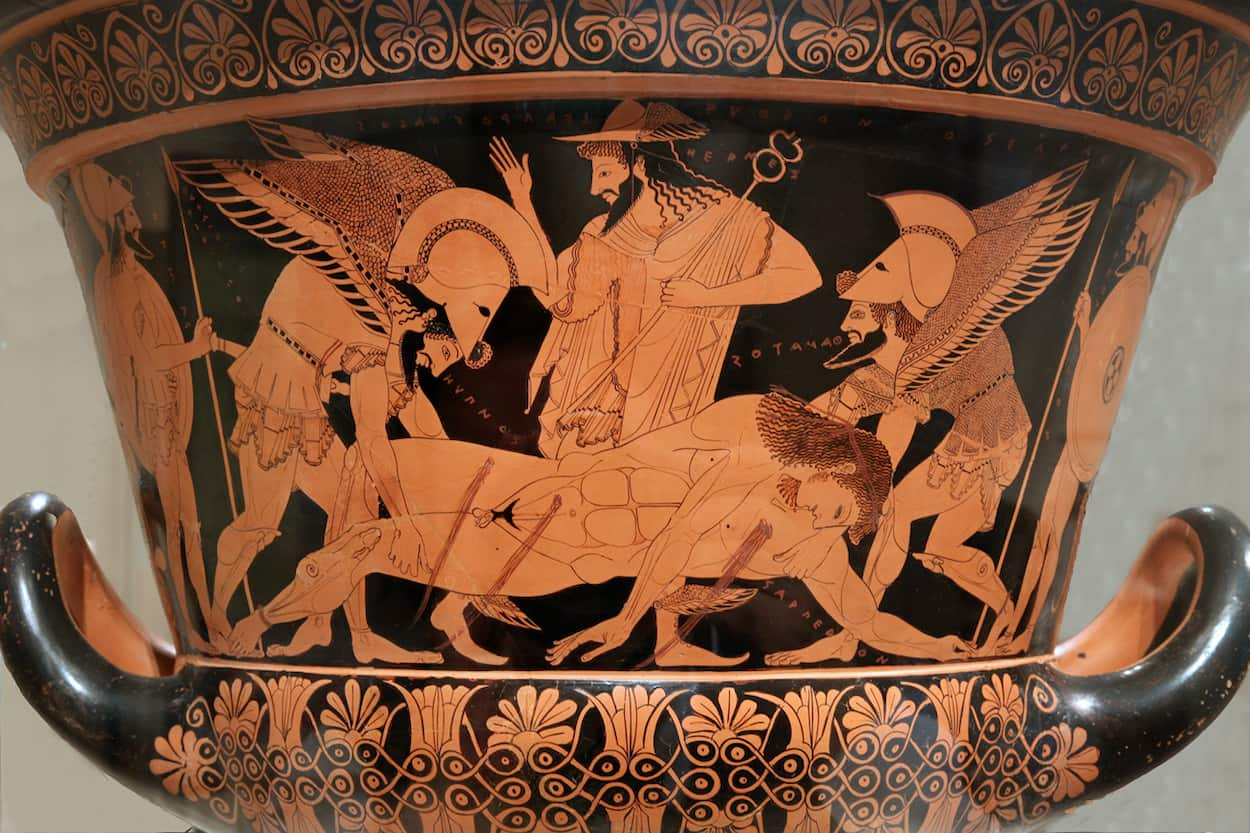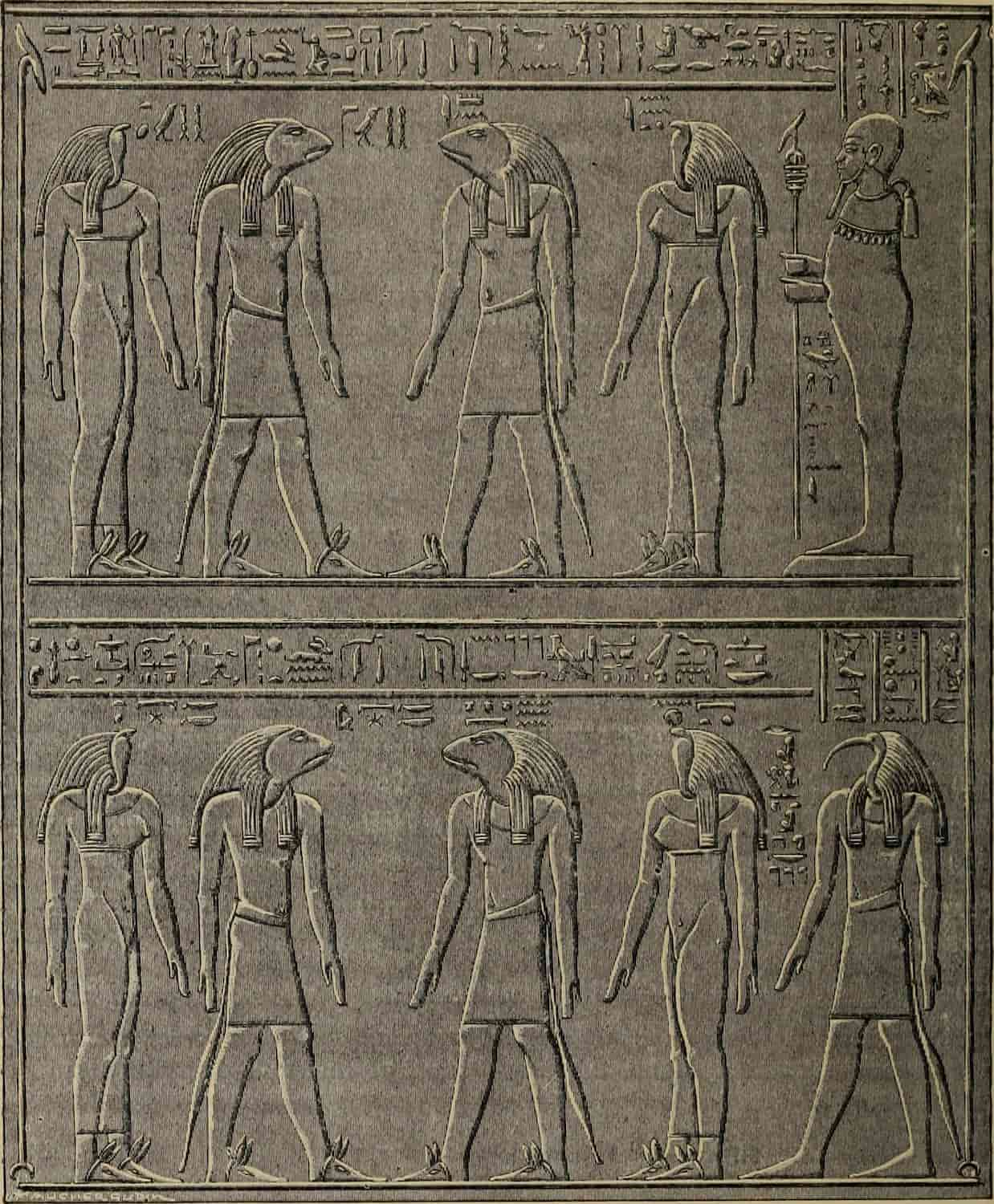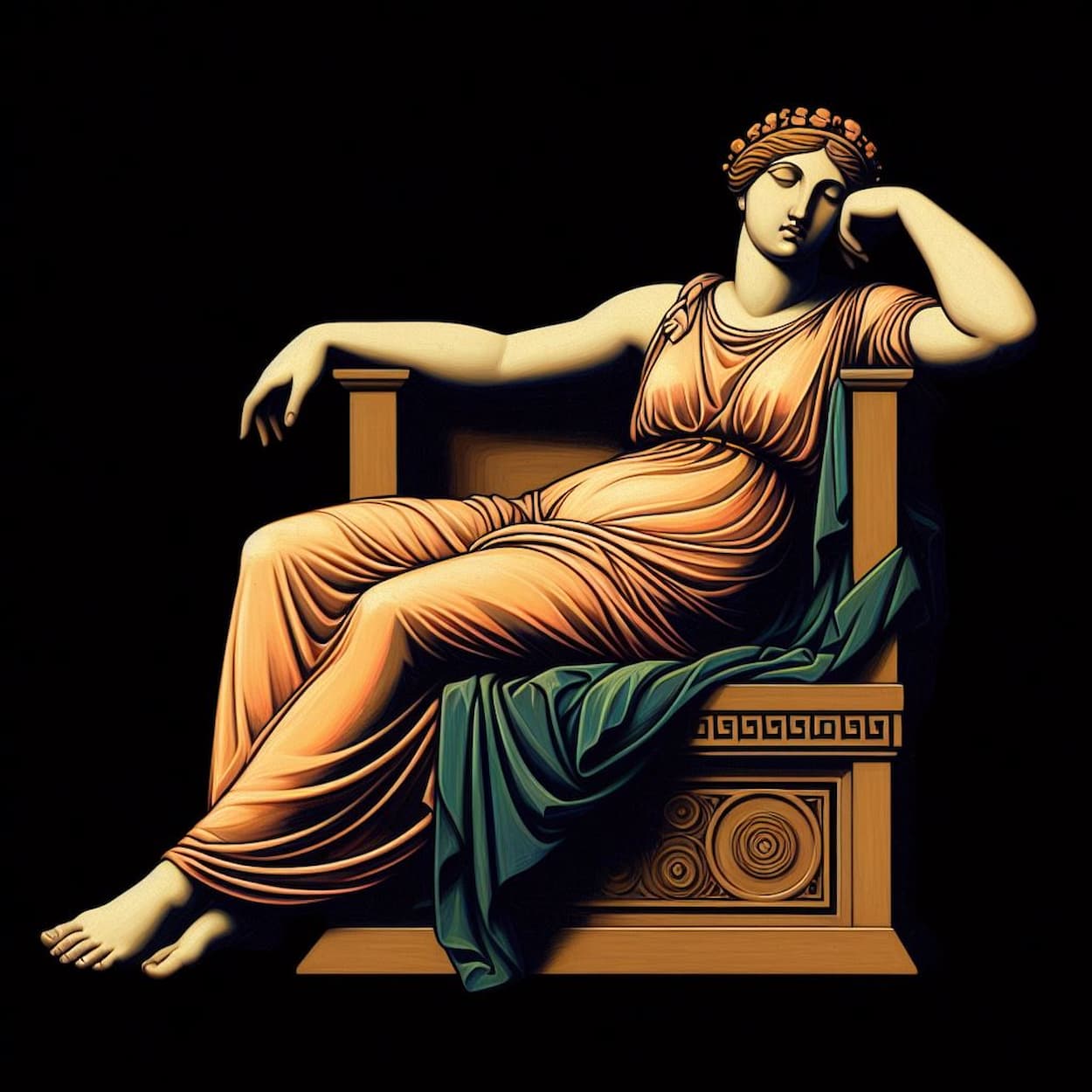Hypnos (from Ancient Greek Ὕπνος Hýpnos, meaning ‘sleep’) is a deity of Greek mythology. He is commonly regarded as the god of sleep. His Roman counterpart is Somnus. Hypnos is one of the chthonic gods (related to death and life or concerning the underworld gods) and therefore bears the epithet Chthonios. Another epithet, according to Pausanias, is Epidotes (Ἐπιδότης Epidótēs, meaning ‘the giver, the generous’).
Homeric epithets include Hypnos nedymos (νήδυμος Ὕπνος nḗdymos Hýpnos, meaning ‘the lovely, sweet, enveloping sleep’) and Pandamator (πανδαμάτωρ pandamátōr, meaning ‘the all-encompassing one’). As Hypnos was attributed to the ability to induce deep sleep in gods and humans, the term hypnosis was derived from his name.
Description
According to Hesiod’s Theogony, he was born fatherless by Nyx, the night; his brother is Thanatos, death. According to Hesiod, the Oneiroi, the gods of dreams, are brothers of Hypnos. According to later mythological tradition, he is the son of Nyx and Erebus, darkness.
Hypnos and Thanatos reside in the underworld (Hades). However, there are different indications regarding the specific location of their residence. Erebus and Tartarus, two other parts of the Greek underworld, are also mentioned as their dwelling places. In the Theogony, the house of night, belonging to the mother Nyx, is designated as their residence. The house serves as an entrance to Tartarus and is said to be located far in the west. Day and night are said to meet there.
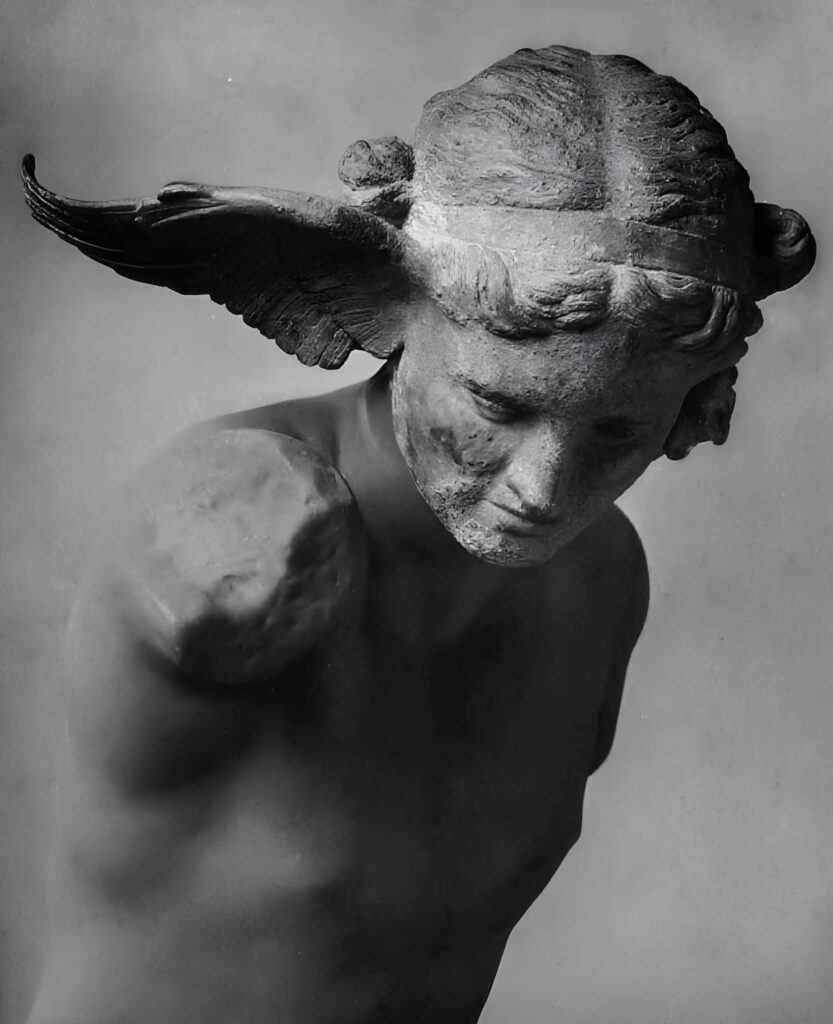
According to Ovid, Hypnos resides in a cave, which is crossed by the river Lethe (“Forgetfulness”).
This cave is located near the land of the Cimmerians. His bed is made of ebony, and in front of the cave entrance grow herbs with a soporific effect. No light or sound penetrates the cave. Fog and dim darkness surround the realm (“Cimmerian darkness”). According to Homer, he resides on the island of Lemnos, which is later referred to as its own dream island by other authors. According to Statius, he lives in the west, in Ethiopia. The realm of Hypnos is also said to be guarded by the goddesses or daimons Aergia (“Leisure”), Hesychia (“Quiet”), and Lethe (“Forgetfulness”).
As his wife, Charis Pasithea is mentioned. His children Morpheus (“Form”), Phobetor (“Terror”), and Phantasos (“Imagination, Fantasy”) are the gods of dreams. However, he is said to have many more children who are also Oneiroi. According to Ovid, he is considered a calm and gentle god who helps people in their distress and owns half of their lives as sleep.
In the visual arts, Hypnos is often depicted as a sleeping youth crowned with poppy flowers, sometimes as an elderly and sluggish man with bird wings, and more frequently as a graceful young man with butterfly wings over his temples or on his shoulders. Among his other attributes are a cornucopia in his right hand filled with dreams or sleep and a poppy branch (or a branch dipped into the river Lethe) in his left. A reversed (extinguished) torch is also counted among his attributes as well as those of his brother Thanatos.
And to Death, that they may carry
Homer, Iliad vv. 453-458 and 681-683
The gentle folk. Brothers and friends
Will honor them with funeral rite
And tomb and gravestone, to the deceased
Strong souls, the supreme and dear honor.
[…]
Enwrap them in immortal robe: then to Death
And to Sleep, twins, give command
To the opulent lands of Lycia.”
Statues depict Hypnos either alone or together with his brother Thanatos. He is often depicted on sarcophagi. According to Pausanias’ Description of Greece, Thanatos and Hypnos are depicted figuratively on a chest in Olympia. The goddess Nyx carries a white boy on her right arm and a black boy on her left arm. Both are depicted asleep with curled feet or crossed legs. It can only be guessed which boy exactly is Hypnos. In Nonnos’ Dionysiaca, the god of sleep is described by Aphrodite as dark-skinned, while his wife, Pasithea, is described as lily-white or snow-white. He is also described as black-winged.
Hypnos was worshipped only in a few places, often in connection with Asclepius; for example, in Sikyon, in a temple of Asclepius. With his epithet, Epidotes, he appears in a painting, putting a lion to sleep. A statue is said to have been there as well. In Troizen in Argolis, he was worshipped together with the Muses, described as good friends. Another statue was found in Sparta. The Bronze Head of Hypnos is exhibited in the British Museum; a marble statuette can be found in the Museo del Prado. Lessing sees in the Ildefonso Group an embodiment of Hypnos and Thanatos.
Myth
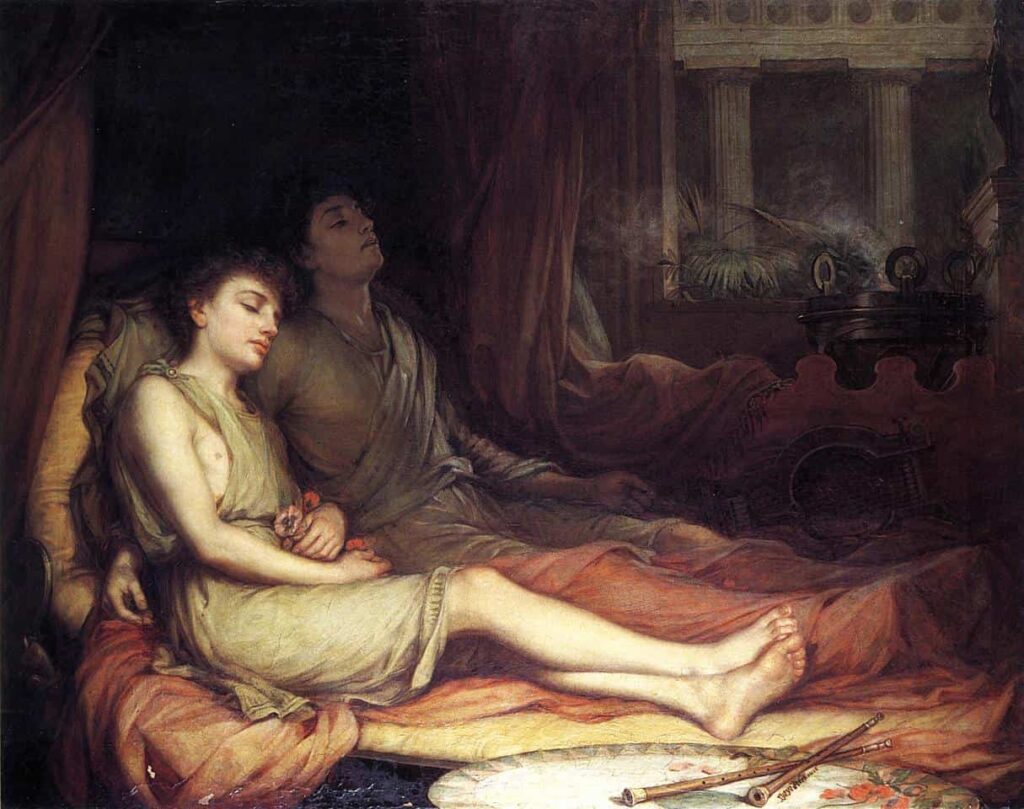
According to Greek mythology, Hypnos possesses the power to put all gods, humans, and animals into deep sleep. According to legend, Hypnos fell in love with the young Endymion because of his beautiful eyes. In order to admire them at all times, Hypnos enchanted the sleeper so that his eyes would remain open even in sleep. A variation of this story describes Endymion as the lover of the moon goddess Selene: Hypnos granted him the ability to sleep with open eyes so that Endymion could gaze upon the moon goddess even at night.
Another legend recounts how the goddess Hera asked Hypnos to put the father of the gods, Zeus, into a deep sleep so that he would not notice if she were to ask the sea god Poseidon for help in the battle for Troy. Hypnos rejected a golden throne created by Hephaestus. He only agreed when Hera promised him Pasithea as his wife. Hypnos made Hera swear on the River Styx because he feared Zeus’ wrath. Hypnos had put Zeus to sleep once before.
This had also been at Hera’s request; she wanted to hunt Heracles undisturbed.
When the father of the gods woke up and found out, he was furious. He pursued Hypnos, who fled to his mother, Nyx.
There, the pursuit by the father of the gods ended, as he preferred not to challenge the night. The next time, Hypnos transformed into a nightbird and flew to Mount Ida. After Hera had distracted Zeus, Hypnos put him into a deep sleep a second time. Then he passed on Hera’s request to Poseidon.
And this time, Zeus did not find out that the god of sleep was behind it. In the Dionysiaca, a scene analogous to the Iliad is described.
During the Trojan War, Zeus orders Hypnos and his brother Thanatos to take the body of his son Sarpedon to Lycia to bury him there.
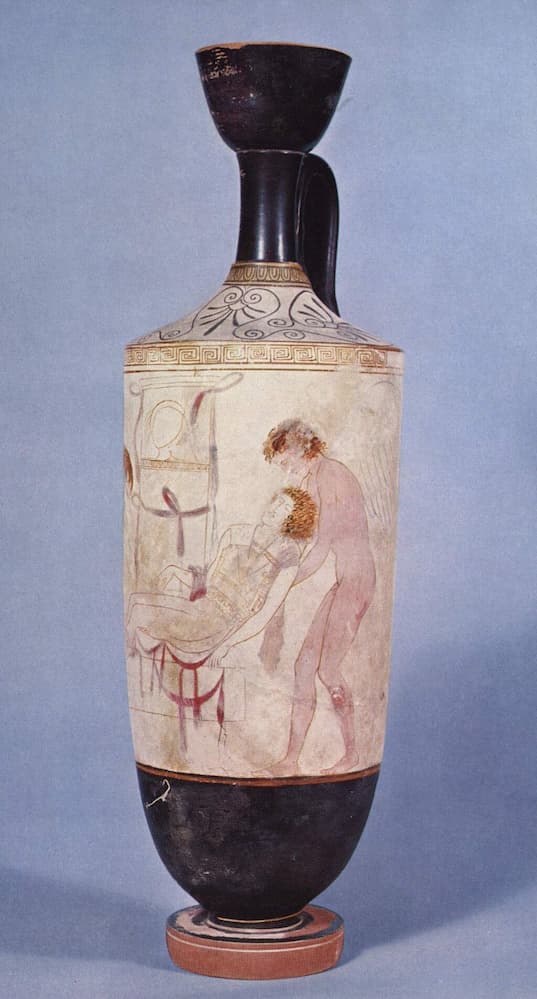
According to another request from Hera (Juno), Hypnos is supposed to inform Alcyone about the death of her husband at sea. The god of sleep entrusts this task to his son Morpheus, as he is a god of dreams and can take on all human forms in dreams. The message is delivered by Iris; Ovid makes it clear that even she can hardly resist the sleep-inducing power of Hypnos.
Hypnos, who was kindly disposed towards humans, also granted requests from heroes. The Colchian princess and granddaughter of Helios, Medea, needed the help of Hypnos. She invoked the god of sleep to put the ever-awake dragon and guardian of the Golden Fleece to sleep.
With Hypnos’ help, Medea succeeded, and Jason obtained the fleece. Athenian vase paintings show Hypnos alongside the giants Alcyoneus and Heracles. Since Alcyoneus could not be killed in his homeland, Heracles had to carry him out of Pallene. The depiction of Alcyoneus as sleeping suggests that Hypnos put the giant to sleep, and Heracles then carried him away.
Roman Appearance as Somnus
To the Romans, the sleep god, known for his gentleness among the Greeks, appears under the name Somnus as the murderer of Palinurus. Somnus appears in the form of a Phorbas, otherwise not mentioned, and tries to persuade Aeneas’ helmsman to rest and leave the helm to him. Despite Palinurus’ initial resistance, Somnus manages to put him to sleep.
He uses a branch soaked in the river Lethe and drips the liquid onto Palinurus’ temples. Then he pushes the sleeping helmsman overboard. The cries for help from Palinurus, who awakens in the waves, go unheard by his comrades in the night.
In the works of the Roman poets Vergil, Seneca, and Statius, the god of sleep is also referred to as Sopor.
Symbols and Attributes
He was depicted as a young naked winged figure, or with wings on his head, holding poppies in his hand, a flower he shared with his brother Thanatos and his mother Nyx.
Cultural Influences
- In the fairy tale “The Messengers of Death,” at one point, Death says, “And besides all that, hasn’t my twin brother, Sleep, made you think of me every night?” Therefore, the Brothers Grimm refer specifically to Hypnos and his twin brother, Thanatos.
- “Hypnos” is the title of a short “sleep tale” written by H. P. Lovecraft in May 1922, published in National Amateur in May 1923, and later in Weird Tales. It appears implicitly at the end of the text as the “lord of sleep, stirring in the night sky.” Furthermore, his signature is present at the base of a statue of a young man, just materialized in the protagonist’s house in the story.
In Popular Culture
- Hypnos is the secondary antagonist in the film “Monkeybone,” where he reigns over Morpheoland (a limbo where humans in comas and characters from books and comics live) and wants to spread gas with the help of Monkeybone, causing nightmares to people, as watching people’s nightmares is Morpheoland’s favorite entertainment.
- In the manga “Saint Seiya,” Hypnos, along with his twin brother Thanatos, is one of the attendants of the King of the Underworld, Hades, and is responsible for arranging the preparations for his earthly rebirth. He resides in Elysium, where he watches over the temple and the tomb of his lord.
- In the anime “Card Captor Sakura,” Hypnos is the main inspiration for the Clow Card “The Sleep,” which resembles him both physically and in powers.
- In the video game “Hades,” Hypnos is in charge of keeping track of the souls entering the afterlife. Many times, the protagonist finds him asleep on the job and tries to wake him up.
- Hypnos appears in “High School DxD,” where he helps Ingvild Leviathan heal her sleep disorder.
- Hypnos appears, this time as a woman, in “Once Upon a Time… Pollon,” where she helps Pollon and Hera warn Alcyone of her husband Ceix’s death by sleeping next to her to make her have a revealing dream.
Genealogy
Parents
- Erebus – god of darkness and shadow;
- Nyx – goddess of the night.
Siblings
- Thanatos, god of death;
- Aether, god of the sky;
- Hesperides, goddess of the evening;
- Philotes, god of friendship;
- Geras, god of old age;
- Momus, god of irony and sarcasm;
- Oizys, god of misery;
- Nemesis, goddess of vengeance;
- Ker, goddess of mankind’s fate in their final moments;
- Moros, god of the portion that each man will receive in life;
- Morpheus – god of good or abstract dreams;
- Icelus – god of nightmares;
- Phantasos – creator of inanimate objects, monsters, chimeras, and fantasies that appear in dreams and remain in memory.
In Medicine
Modern psychoanalysis uses the term hypnosis (a mental state prompted by hypnotic induction or suggestion), a word derived from the name of this god; as well as the verb hypnotizes – full mastery with someone, subjugating someone of their will. While the Latin name for this god, Somnus, uses the word in denied form: insomnia, meaning “state of insomnia”.


